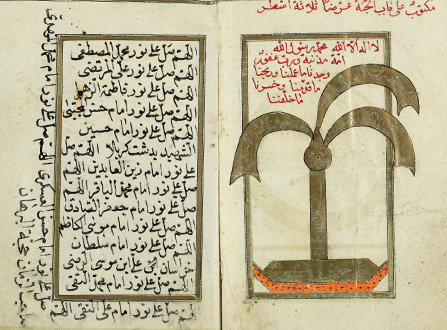Southeastern Europe in the Middle Ages, 500-1250
لتكبير النص لتصغير النص- كتاب
Southeastern Europe in the Middle Ages stood at a crossroads of trade and crusading routes and fell within the spheres of influence of both the Byzantine Orthodox Church and Latin Christendom. This authoritative survey draws on historical and archaeological sources in the narration of 750 years of the history of the region, including Romania, southern Ukraine, southern Hungary, Croatia, Slovenia, Serbia, Montenegro, Bulgaria, Macedonia, Albania and Greece. Exploring the social, political and economic changes marking the transition from late Antiquity to the early Middle Ages, this book addresses important themes such as the rise of medieval states, the conversion to Christianity, the monastic movement inspired by developments in Western Europe and in Byzantium, and the role of material culture (architecture, the arts and objects of daily life) in the representation of power.
| العنوان |
Southeastern Europe in the Middle Ages, 500-1250 / Florin Curta. |
|---|---|
| الناشر |
Cambridge : Cambridge University Press |
| تاريخ الإصدار |
2006 |
| ملاحظات |
Title from publisher's bibliographic system (viewed on 05 Oct 2015). Includes bibliographical references (p. [438]-486) and index. English |
| رقم الرف |
Introduction -- The end of Late Antiquity or the beginning of the Middle Ages (c.500-600)? -- Southeastern European "Dark Ages" (c.600-c.800) -- The rise of new powers (800-900) -- Iron century or golden age (900-1000)? -- The first Byzantine century (1000-1100) -- The second Byzantine century (1100-1200) -- Between the Crusade and the Mongol invasion (1200-1250) -- Conclusions and lingering questions. |
| سلسلة |
Cambridge medieval textbooks |
| الشكل |
1 online resource (xxviii, 496 pages) : digital, PDF file(s). |
| اللغة |
الانكليزية |
| رقم النظام |
997010709700405171 |
MARC RECORDS
أتعرفون المزيد عن هذا العنصر؟ وجدتم خطأ ما؟

 سجل الدخول باستخدام غوغل
سجل الدخول باستخدام غوغل
 تسجيل الدخول باستخدام فاسيبوك
تسجيل الدخول باستخدام فاسيبوك



